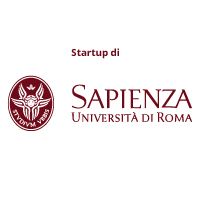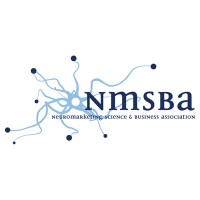
Mental workload is a complex construct resulting from different interacting cognitive aspects. In particular, it reflects the amount of mental resources necessary to carry out a series of concurrent tasks. (Wickens, 2008).
Electroencephalography (EEG) can provide reliable and accurate measurement of mental workload. The EEG rhythms most relevant for evaluating mental workload are theta and alpha activities recorded over the Prefrontal Cortex (PFC) and Posterior Parietal Cortex (PPC). The theta rhythm, especially over the PFC, exhibits a positive correlation with mental workload- i.e. increases as the workload increases (Borghini et al., 2013). The alpha rhythm, especially over the PPC, presents an inverse correlation with workload - i.e. decreases (Gevins et al., 1997).
BrainSigns developed and patented a neurometric for the mental workload evaluation, based on the application of a specific machine learning model, specifically tuned on the frontal theta and parietal alpha frequency features, coming from the EEG recording (Aricò et al., 2016).
When parietal electrodes are not available, an alternative index proportional to mental workload can be used. This index is referred to as cognitive effort or mental effort, and it exclusively considers the prefrontal theta activity. The workload neurometric, together with the cognitive effort, is an integral part of the BrainSigns suite of applications. In human factor context, it is employed to objectively assess the activity of operators in automotive (Di Flumeri et al., 2018 ), in aviation (Aricò et al., 2016 ), in industry (Giorgi et al., 2021 ), in education (Ronca et al. 2025 ).
In the field of neuromarketing it is employed to evaluate the user’s demand in interacting with different technologies or UX panels or to assess the fluency in marketing communications (Modica et al. 2018 ) or product experience (Vozzi et al. 2023 ). In the context of health and wellness this neurometric can be employed to assess quality of neuro-medical devices, i.e. cochlear implants (Cartocci et al. 2015 ). Workload is one of the neurometrics available on the Mindtooth Neurometrics App, developed by BrainSigns.
REFERENCES
- Aricò, Pietro, et al. "A passive brain–computer interface application for the mental workload assessment on professional air traffic controllers during realistic air traffic control tasks." Progress in brain research 228 (2016): 295-328.
- Aricò, Pietro, et al. "Adaptive automation triggered by EEG-based mental workload index: a passive brain-computer interface application in realistic air traffic control environment." Frontiers in human neuroscience 10 (2016): 539.
- Borghini et al., “Frontal EEG theta changes assess the training improvements of novices in flight simulation tasks,” in 2013 35th Annual International Conference of the IEEE Engineering in Medicine and Biology Society (EMBC), 2013, pp. 6619–6622.
- Cartocci, G.; Maglione, A.G.; Vecchiato, G.; Flumeri, G.D.; Colosimo, A.; Scorpecci, A.; Marsella, P.; Giannantonio, S.; Malerba, P.; Borghini, G.; et al. Mental workload estimations in unilateral deafened children. In Proceedings of the 2015 37th Annual International Conference of the IEEE Engineering in Medicine and Biology Society (EMBC), Milan, Italy, 25–29 August 2015; pp. 1654–1657.
- Di Flumeri, Gianluca, et al. "EEG-based mental workload neurometric to evaluate the impact of different traffic and road conditions in real driving settings." Frontiers in human neuroscience 12 (2018): 509.
- Gevins, M. E. Smith, L. McEvoy, and D. Yu, “High-resolution EEG mapping of cortical activation related to working memory: effects of task difficulty, type of processing, and practice,” Cereb. Cortex (New York, N.Y. 1991), vol. 7, no. 4, pp. 374–385, Jun. 1997.
- Giorgi, Andrea, et al. "Wearable technologies for mental workload, stress, and emotional state assessment during working-like tasks: A comparison with laboratory technologies." Sensors 21.7 (2021): 2332.
- Modica, E.; Cartocci, G.; Rossi, D.; Martinez Levy, A.C.; Cherubino, P.; Maglione, A.G.; Di Flumeri, G.; Mancini, M.; Montanari, M.; Perrotta, D.; et al. Neurophysiological responses to different product experiences. Comput. Intell. Neurosci. 2018, 9616301.
- Ronca, V.; Aricò, P.; Tamborra, L.; Biagi, A.; Di Flumeri, G. A Multimodal Neurophysiological Approach to Evaluate Educational Contents in Terms of Cognitive Processes and Engagement. Bioengineering 2025, 12, 597.
- Vozzi, Alessia, et al. "Time-Dependent Analysis of Human Neurophysiological Activities during an Ecological Olfactory Experience." Brain Sciences 13.9 (2023): 1242
- Wickens, Christopher D. "Multiple resources and mental workload." Human factors 50.3 (2008): 449-455.



